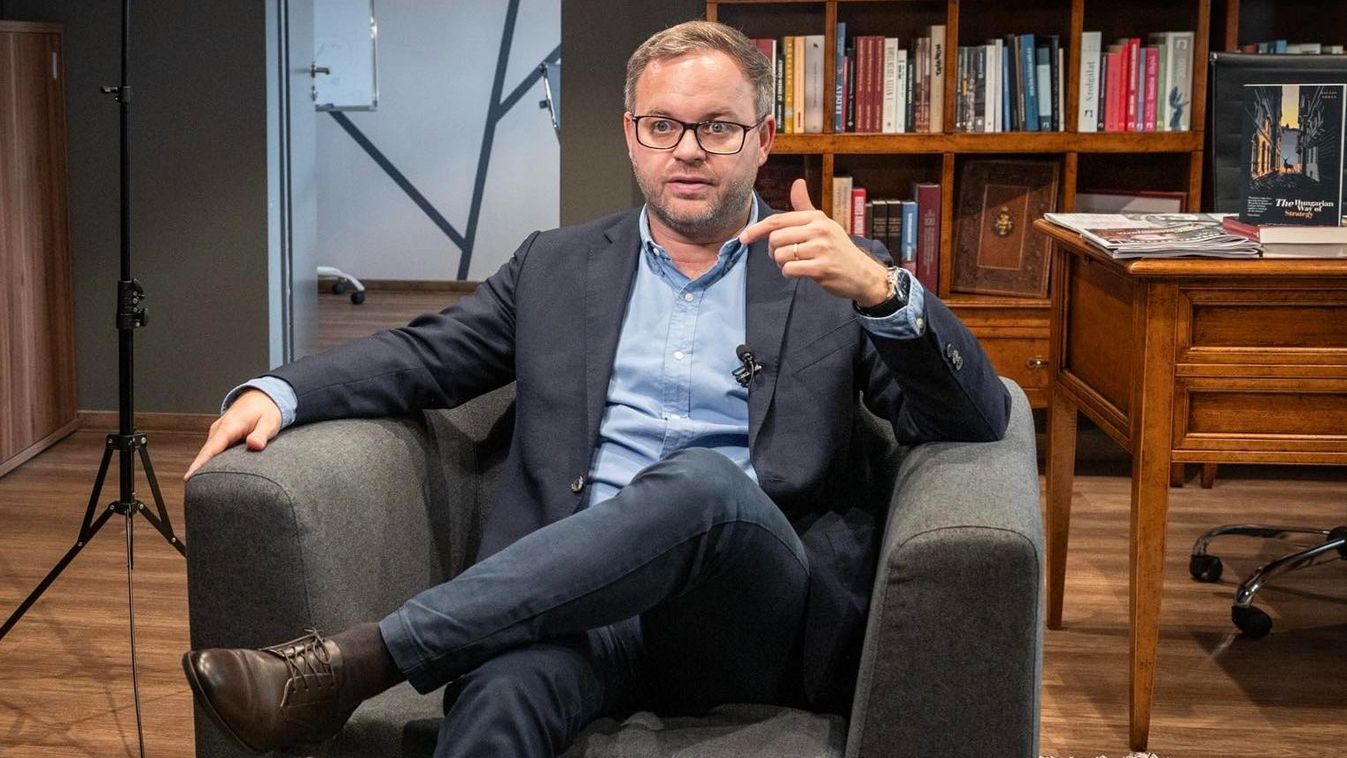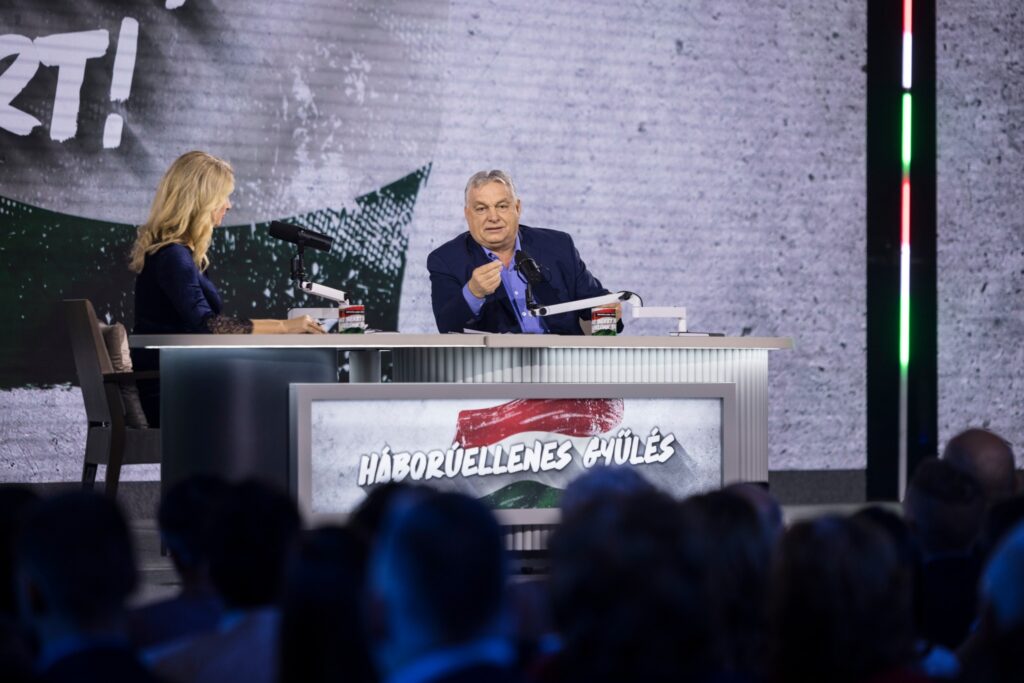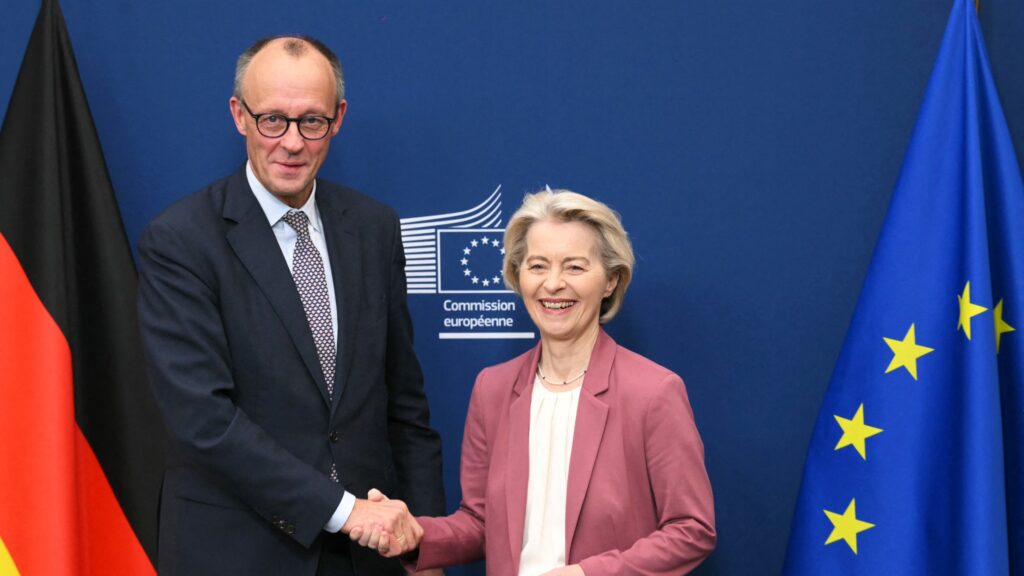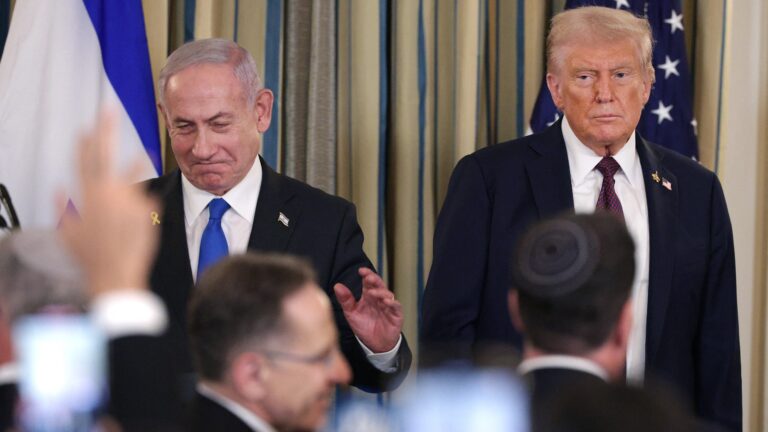The following is a translation of an analytical piece written by Balázs Orbán, political director for the Prime Minister of Hungary, originally published in Hungarian on Mandiner.hu.
Nowadays, two major armed conflicts are leaving their mark on international relations. The first is the Russian-Ukrainian war in our neighbourhood, and the second is the conflict in the Middle East, in which Israel is fighting Hamas forces for the time being, but is indirectly in conflict with several neighbouring states and regional powers. The perception of these two conflicts is a particular divide between progressive politicians and opinion leaders. On the one hand, they do not want to hear about peace talks in the case of the Russian-Ukrainian war, and they are offended when, let’s say, the Hungarian government stresses the need for it. On the other hand, they are just as vehement in their calls for peace talks in the case of the Middle East conflict.
Of course, we can interpret these inconsistencies by concluding that they are only pursuing their own interests: the Russian-Ukrainian negotiations would be a loss of prestige, while escalation in the Middle East would be another problem for the progressive forces to solve. In other words, we are dealing with net hypocrisy. And while this is true, this explanation deprives us of understanding why the progressives are wrong and why the Hungarian government is right. After all, the peace process has a scientific basis and can be examined in this framework.
The Science of Peace
Peace research and peace studies generally involve research and education on the causes of violence, including war, and the conditions for peace. While peace research is largely included within the social sciences, peace studies have a broader base, including history, philosophy and religion in addition to the social sciences. The situation is complicated by the fact that the subject is also covered by a number of disciplines, including security studies, international relations, and conflict resolution.
An important tool and, in essence, a starting point for these academic studies is the statistical analysis of past conflicts. An analysis of data from past wars shows that the chances of peace after the first 30 days of an armed conflict steadily deteriorate. This is why it would have been particularly welcome if the belligerent parties of the war in our neighbourhood had heeded the Hungarian government’s call for peace from the outset, or at least continued the negotiations in Türkiye that began in March 2022. We have seen that if a war drags on, it becomes very difficult to bring it to a conclusion.
The Uppsala Conflict Data Program (UCDP) has analysed data on conflict resolution from 1946 onward and found that interstate wars that last more than a year typically last more than a decade. The longer a war has been going on, the more difficult it is to end.
This realization, however, further reinforces the need to start peace negotiations as soon as possible, and once again demonstrates the Hungarian government’s commitment to peace.
Research analysing UCDP data has also shown that 50 per cent of inter-state conflicts end in some kind of negotiated settlement, such as a ceasefire (the more common) or a peace agreement (the less common). An important distinction between the two is that the first is an agreement to temporarily or permanently suspend violence, while the second is an agreement to address the root causes of the conflict. Therefore, the former is often violated by the parties. Nevertheless, between 1989 and 2020, more than 2000 ceasefires were declared worldwide.
Beyond the statistical lessons of peace agreements, studies have been carried out on the conditions for peace in the context of the Russian-Ukrainian war as well. One such study, while focusing mainly on the current conflict, also takes stock of how armed conflicts usually end. It finds that in 30 per cent (!) of the cases there is a ceasefire, 21 per cent of the time, there is a victory for one side, a peace agreement 16 per cent of the time, and in 33 per cent of cases, a different outcome—unfortunately, this typically means a frozen or protracted conflict. This study examines the conditions for ending the Russian-Ukrainian conflict. It also looks at the historical factors that motivated peace.
Accordingly, the literature on the end of war identifies five key parameters that can influence the early start of peace processes:
- The prospect of success/victory as a function of the balance of military power between the parties and the achievability of the objectives pursued by each.
- The human, economic, and military costs of the war.
- The tangible external pressure exerted by the international community or a third party on the belligerent parties, for example through mediation, intervention or sanctions.
- Domestic political pressures on key decision-makers on each side, measured through domestic public opinion, domestic political status, and pressure from political and military elites.
- Positive incentives for both sides to resolve the conflict.
The list cited above also shows that the state of war becomes unsustainable over time not only for the warring parties but also for external actors. Moreover, other research suggests that a stalemate that hurts both parties may force actors to the negotiating table. The parties acknowledge that they are hurt by the status quo, but they also know that they cannot defeat the other side militarily. Negotiations are therefore a logical way to resolve the unsustainable situation.
The Art of Peacemaking
Critics of the peace policy, on the other hand, usually argue that without a concrete peace plan, no one can come to the negotiating table. I am reminded, wittingly or unwittingly, of a scene from the film The Hunt for Red October, in which a US admiral described their then-Cold War adversary as saying, ‘The Russians won’t go to the toilet without a plan’. Ironically, it is now the pro-war forces in the West and the US who are behaving like the Russians in the film.
But our knowledge of peace processes does not prove their point. The University of Edinburgh’s Political Settlements Research Programme has created a new dataset of over 1,500 peace agreements, the PA-X database. According to their research, the first and essential element of any peace process is the ceasefire, with the preparation of the peace agreement following only afterwards. In other words, the parties typically do not have a well-defined peace plan before they declare a ceasefire and start negotiations. Rather, they are forced by the very parameters discussed in the previous sub-chapter to first temporarily cease fighting and start peace negotiations. What the final peace will look like is something that will emerge during the negotiations, there is no pre-written peace plan needed.
Five More Lessons from Peace Literature
Studying peace literature reveals further lessons about how peace is made. These are case studies on the one hand, and observations from the particularities of conflicts on the other. These lessons also show that the Hungarian government’s critics’ convulsive obsession with a concrete peace plan is unfounded; and confirms that if we want peace, we must act as a third party:
- The first step towards peace is a ceasefire. Peace processes usually involve at least three ceasefires—in Bosnia alone there were 44 of them made between 1992 and 1995. In Northern Ireland, 11 agreements were concluded before the Good Friday Agreement and 21 afterwards to ensure implementation.
- High intensity conflicts without peace negotiations are among the bloodiest. In 2021, 44 per cent of the 32 active armed conflicts had no peace process. These include, for example, the war against the Ethiopian Tigers, Boko Haram in the Lake Chad region, the war in Western Sahel and northern Mozambique, and fighting against the Islamist rebel group United Democratic Forces within the Democratic Republic of Congo.
- All peace processes in Europe currently involve third parties as mediators. Uniquely on the European continent, third parties play the role of mediator in all peace processes. The majority of mediators are international organizations. However, in recent years, the role of states has also increased. The most frequent mediator is the OSCE, involved for example in the Armenian-Azeri, Georgian, and Moldovan conflicts. The EU has also played a significant role in conflict settlements in recent years: as lead mediator in Serbia and Kosovo, co-mediator in Georgia, observer in Moldova, and stakeholder in Cyprus. In Cyprus, the UN has played the role of lead mediator, while the Armenia-Azerbaijan conflict highlights the growing role of states as mediators in peace processes, with Russia as a mediator and Türkiye as a stakeholder, which contributed to the ceasefire agreement between the warring parties.
- You don’t need a concrete plan for a peace agreement to start negotiations. The root of the current conflicts in Europe lies in gaining control over various disputed territories. However, in most cases, the status of these disputed territories is blocked or deliberately avoided in the negotiations in order to maintain dialogue. For example, the occupation of Nagorno-Karabakh by Baku created a new status quo, but no agreement on the final status of the territory was reached during the negotiations and the subsequent ceasefire agreement, and negotiations are still ongoing.
- The negotiated conclusion of the Vietnam War could serve as a model. In the case of the Vietnam War, the enemy proved to be much more resilient than expected, and the military losses of the great power increased exponentially. After incessant bombing and threats of nuclear strikes had also failed, the United States saw the time as ripe for peace negotiations. President Nixon and his national security adviser Henry Kissinger’s aim was to secure the integrity of South Vietnam through negotiation. During the negotiations, the US side used a threatening tone, but also a generous offer of peace to bring the North Vietnamese side to the negotiating table. In the case of Vietnam, the parties used force and diplomacy in parallel, not ceasing to fight during the dialogue in order to maintain their negotiating position.
However, the start of peace negotiations is extremely important, because in a case where a great power cannot achieve its strategic objectives without being humiliated, negotiations can drag on for a long time: in the case of the Vietnam war, formal negotiations took three and a half years in Paris, in parallel with the one-to-one meetings between Kissinger and his North Vietnamese counterpart. Private diplomacy can play an important role in bringing a conflict to an end, reducing the intensity of fighting or avoiding its recurrence, as exemplified not only by the Vietnam war but also by the wars in India and Pakistan, the US-Cuba confrontation, or the Cyprus conflict.
Everyone Has to Work for Peace
In the light of all this, it is incomprehensible why the leaders of the Western world, the United States and Europe, are shying away from taking meaningful steps towards peace. If they fail to do so, as the statistics indicate, the chances of the Russian-Ukrainian conflict escalating to a higher intensity are increasing. Moreover, the longer the delay, the less chance there is that the armed fighting in the neighbourhood will not turn into a decades-long conflict.
The argument that peace negotiations cannot be started without a concrete peace plan is also untenable. The road to peace starts with a resolution and continues with a ceasefire, just as the Hungarian government proposes.
The Hungarian government is convinced that a cessation of fighting and the conclusion of peace as soon as possible are in the interests of both Europe and Hungary. But it is more than an interest.
The figures and the analyses show that the Hungarian position is not only in our interests, but is also the right one: peace requires a ceasefire first, and only then can we start to work on a concrete peace plan.
Related articles:







